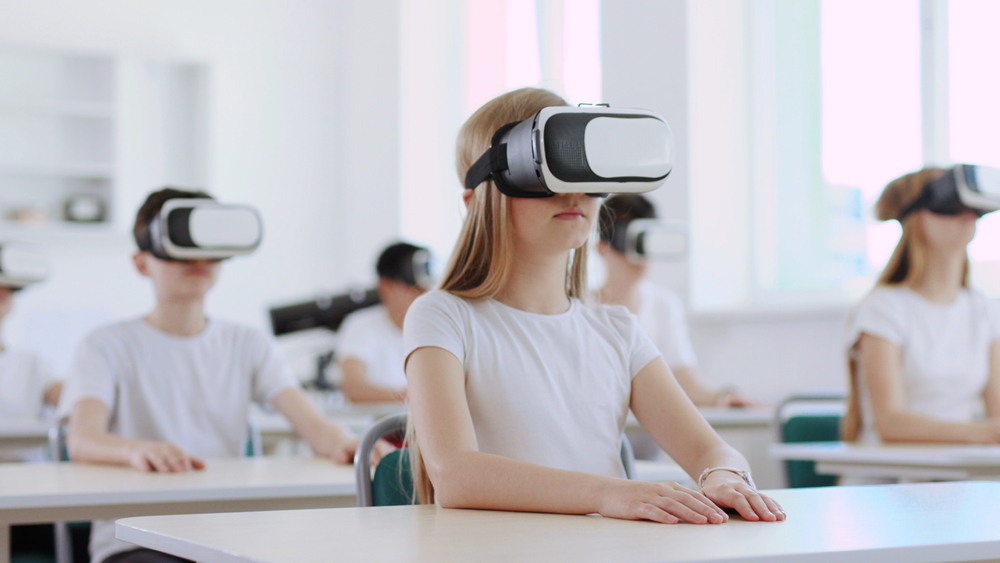
Online education has exploded across the country amid the ongoing COVID-19 pandemic, and families are adapting to a new tech-driven normal. The Coronavirus may change the way we learn, using technology as a catalyst.
Augmented reality, virtual reality, the Internet of Things, and cloud computing are transforming the education sphere in 2020 by providing learners with an added layer of accessibility, efficiency, and innovation.
Read on to learn more about how new technologies are transforming education in the current marketplace.
Artificial Intelligence
With more students than ever before spending at least part of their school days online, automation and monitoring software is in high demand. Educators are using digital apps and tools to monitor student activity, and AI plays a large role in navigating the process.
Apps that rely on artificial intelligence to respond to user behavior are more accurate and adaptable than static programs.
Machine learning gives students the ability to control the lesson, while accurately adapting the material to their current skill level and learning speed. This has the potential to reduce learning anxiety, especially in early learning subjects like reading comprehension.
Parents can use a reading app, for example, to help their child learn how to read by “reading along” with them using AI voice tracking. The system can then respond to hesitations, reading speed, and commands in real time.
Using AI gives learners more independence and autonomy in the learning process, even without a human teacher present.

Augmented Reality
While virtual reality replaces the student’s surroundings with digital renders, augmented reality enhances it. AR technology in education gives each student an extra facet of interaction without completely removing the “reality” element from their learning environment.
Similar to the popular mobile game Pokemon Go, AR-enabled apps use existing features in the surrounding environment as markers and triggers. This allows the program to operate without any auxiliary equipment, except for the user’s mobile device.
When it comes to corporate learning and adult education, this has made the onboarding process easier than ever before for telecommuters. Corporate training and assessments have also been simplified with the use of responsive filters and AI-automated prompts.
In every level of the education sphere, augmented reality is a useful way to merge the digital and practical worlds. Artificial intelligence and mobile-friendly formatting are driving this industry toward the mass consumer marketplace.

Virtual Reality
Making learning fun has always been a main catalyst for making students interested in education. In short, kids want to learn more when they’re having a good time.
Using virtual reality technology, educators can simulate a roller coaster ride as the backdrop for their math lesson. Or, teachers can transport kids to a digitally created safari to learn about the climate of the Serengeti.
Virtual reality has also enhanced peer-to-peer communication, allowing students to discuss course material in a completely different digital sphere. While in the virtual environment, users are able to:
- Use problem-solving in real time
- Improve collaboration with more seamless connectivity
- Work on projects simultaneously, similar to the classroom environment
- Help introverted/reserved students perform more effectively among the group
The possibilities are as endless as the expanse of the web, and this technology is just kicking off in recent years.
Cloud-Based File Sharing
Telecommuting grew by more than 40% during the COVID-19 outbreak, and online education swept across the nation as schools scrambled to translate their lessons online. Corporate education also made a major shift, as more employees needed remote accessibility and location-independent course material.
Using the cloud to store and share information makes it possible to process information securely and easily from any network. This has provided families and individuals with a higher level of access to education than ever before. Literacy rates and overall education levels have risen as more and more people use the internet as their primary learning medium.
Rather than requiring students to use their resources and time to meet at one central location, remote and cloud-based learning solutions bring the classroom to the student.
Technology is present in virtually every aspect of our daily lives, but education has made significant strides with the distance learning boom of 2020. Educators are using systems like AR, VR, and AI to bring students together like never before. From creating completely manufactured digital worlds to providing learners with the realism of an in-person teacher, these tech tools will forever change the way students and educators interact – even after the pandemic.
Distance learning required students to have a higher level of independence and agency, and educational programs and applications are following suit. Using AI and automation capabilities puts the reader in control of their learning experience, not the program or teacher.
Artificial intelligence and immersive applications like Readability give parents and students more control over their learning plan. Take a look at one of the ways we’re using new technology to transform the world of education.

 Español
Español